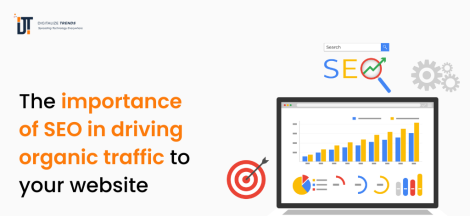SEO is confusing. There are a lot of terms, strategies, and best practices that can be overwhelming for beginners and even experienced digital marketers.
You want to improve your organic search rankings but you don’t know where to start!
This off-page SEO checklist will help you optimize your website for better rankings on Google and other major search engines.
We’ve compiled the best off-page optimization strategies into one helpful guide that you can easily reference whenever you need it.
14-Step Off-Page SEO Checklist
1. Evaluate your backlink profile
The first step to improving organic search rankings on Google or other engines like Bing and Yahoo is through an evaluation of the links that are pointing toward your site from outside sources.
There is lots of information regarding link building out there, so I won’t spend much more time talking about it here.
It’s important to note that Google is getting smarter each day in identifying and penalizing website owners who attempt to manipulate their search rankings through artificial links, or even worse, black-hat SEO techniques (for example purchasing links) that could potentially bring down your search rankings.
So evaluating your backlink profile is vital to your efforts.
Before you start off-page SEO, first assess your backlink profile with one of these tools:
Once you’re finished checking your backlinks, it’s time to move on to the next step in this off-page SEO checklist, which is checking your competitor’s backlink profiles.
2. Analyzing your competitors’ backlink profiles
Next, find the websites that are ranking for your most important keywords and run them through one of the backlink-checking tools mentioned above.
This way you’ll know what sorts of links they have pointed toward their site, whether they’re natural or artificial, and what anchor text is being used.
Keep an eye out for any patterns emerging in your competitor’s backlink profile, as this could be valuable information for your own Off-Page SEO strategy.
Also, see if they’re getting any links from pages containing words that are important to your site and do the same thing with those sites.
Simplifying the building process through an infographic
Try to get your linking partners to add appropriate text where you will be able to use it for link building.
Visit each one of your competitor’s sites and find their contacts (usually named contact or similar) on social networks, email, phone numbers, and addresses.
Send them a message asking them to add some little text about you on the website and describe why it is important for them to do so.
3. Create a powerful internal linking structure within your website
People always think of search engine optimization as a game, so here’s how you win: by linking to your homepage from all the other pages on your site.
This is what we call an “internal link,” and it’ll really give those robots at Google pause when they crawl through every inch of that website looking for strong content.
Make sure there are links in each section or subsection (or blog post) back to the main page; this will make everything easier if anyone tries using sitemaps with crawlers because then just follow where people have already been before them!
4. Crawl your own site
Crawling your own website is recommended so that you are aware of any broken links, 404 error pages, and missing titles or meta-descriptions.
Maybe the spiders have found some completely different data on the page than you expected (e.g., the page was loaded with errors), which would be beneficial information that you can use to fix it.
5. Consider loading your pages with keywords, but don’t overdo it!
Engaging in keyword-stuffing is one of the most frequent mistakes made by people who are just starting out in SEO.
There is no point stuffing the meta-titles, meta-descriptions, and the actual content of your blurbs with keywords.
You should make sure long-tail keywords are mentioned here and there in the context of the text, but you don’t need to overdo it because all that’s going to do is damage your site.
And yes, Google can tell when people are stuffing keywords in their content.
6. Utilize different types of images on your website and blog posts
Basically, there are two types of images that you should consider: informational and aesthetic images; this is what we’ll be talking about now.
Here’s a hint: try loading your article with images that explain the topic in a visually appealing way.
For example, if you’re writing a blog post about “The Color Green,” make sure there are images of green items scattered throughout the article (green leaves, green clothing).
It won’t be hard to find these types of pictures and they’ll help draw in readers who aren’t too keen on reading lots of text.
7. Assess your link-building options
With off-page SEO, time and experience are two of the most important factors.
With that in mind, one thing you might want to do is assess what type of links would best suit your needs based on these types:
Broken Links – If someone has their site linking back to yours but they changed or deleted it because something went wrong with either page’s design then this can be fixed by contacting them for a new hyperlink connection.
Guest Post Outreach – You may have had success marketing other companies before so now it’s time to leverage those skills for yourself.
Local Citations – While not as popular today (due to outraised effectiveness), these citations come from businesses near where you operate such as mapping and events directories.
Social Signals – Although these may not help you increase search engine rankings, they will improve your site’s traffic and user experience.
Negative SEO attacks – These are usually spammy links that you don’t want to have associated with your brand name;
Sponsored Links – Paid links can also help you boost your site’s search engine ranking. Just make sure you’re purchasing from a reliable full-service digital marketing company that isn’t going to destroy your website by loading it with spammy content.
8. Steal your competition’s links with broken link-building
Broken link building is one of the quickest ways to build your backlink profile.
You can find broken links on domains you want to earn a link from or check out competitors’ profiles for more ideas (Xenu, Ahrefs and Check My Links are some tools that help with this).
Find a page on your website that would work as an alternative replacement for any broken external links then send an email about it over!
It is a surefire way to get links anyway.
9. Share your knowledge and content
Sharing valuable, unique, and relevant LinkedIn articles has become a great way to create visibility.
Don’t be afraid to share your own stuff as well – you can gain valuable backlinks by sharing quality blog posts from around the web through LinkedIn Pulse.
Another great way to get influencers involved is with LinkedIn ad campaigns; publishing sponsored updates that link back to your website or directly pitching someone via InMail (a paid service) will help drive more awareness.
10. The power of peer-to-peer publicity
Another one for all you marketers out there! It might seem like an old trick, but word of mouth still works wonders when it comes to getting links and shares across social media.
Remember that old saying, “Birds of a feather flock together?” Well, this is just as true with links. If you have an influencer talking about your project on their blog, it may influence other influential bloggers to share content related to your campaign or even engage them in a back-and-forth conversation over email to get the ball rolling.
11. The power of humanizing your link
It’s not about always thinking about sales. Every successful online campaign (and offline campaign, for that matter) should be able to make the people involved feel like they are part of something bigger than themselves.
12. Planning your link-building outreach
Typically, the best time to send out a mass email for link building is on Monday morning.
However, if you are planning on pitching an influential blog post you’ve written about them or their website, it may be more beneficial to send that email later in the week, so they actually have time to digest and respond back.
13. Putting yourself into your emails
Did you know that people can tell when someone doesn’t actually write their own emails? I don’t mean just putting “Dear John Doe” as the salutation.
When crafting your outreach email, try always conjuring up some sort of memory or connection with each influencer before sending them an email.
This could include having met them at an event, having seen them speak at a conference, or even mentioning something you read in one of their online publications. The more personal you make the email, the better.
14. Putting “no response” emails on ice
I cannot stress enough how important it is to stay organized with your email outreach efforts. And by an organization, I mean sending reminders to influencers and knowing when it might be appropriate to send another follow-up email (and then actually doing it!).
If you haven’t received a response from someone after two weeks of following up via email and social media mentions without any luck, write down their name and keep track of their contact information. Then add these people to your CRM (customer relationship management) tool under the “icebox” category.
Six months to 1 year later, check your icebox list and see which emails might be worth another shot. Use the tools outlined in this blog post to re-connect with influencers to whom you originally sent an email (or social media mention) 6 to 12 months ago but never heard back from them.
You’d be surprised at how many people will respond when they get a reminder email after quite some time!
Final Words
The off-page SEO checklist is a simple list of things you can do to improve your organic search and get more visitors.
These are some tasks that might sound intimidating, but they don’t have to be if you partner with an expert who knows how all these principles work together.
Well, that’s it for now. I hope you enjoy the article and find value in reading it!
If you have any questions or thoughts on this topic, then let me know by typing them down below.
Suggested:
10 Powerful Writing Tools for Crafting Seo-Friendly Content.
SEO Is Dead? Hell No, It’s Immortal Here’s Why





 How to create an NFT Marketplace?
How to create an NFT Marketplace?